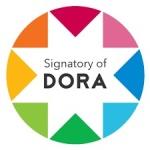Water Scarcity Effect on Economic Growth in MENA Region during 1975-2017
Résumé
The paper aimed at identifying the water scarcity effect on economic growth in MENA countries using a panel data analysis during 1975-2017. The findings showed that there is a negative effect of excess in water consumption on economic growth, which means that augmentation of water consumption rates decelerates economic growth for most MENA countries.
##plugins.generic.usageStats.downloads##
Références
IPCC. (2012). Managing the Risks of Extreme Events and Disasters to Advance Climate Change Adaptation. A Special Report of Working Groups I and II of the Intergovernmental Panel on Climate Change. Cambridge University Press, UK.
World Economic Forum. (2015). Global Risks 2015. 10th Edition. WEF, Geneva.
UNDP. (2006). Beyond Scarcity: Power, Poverty and the Global Water Crisis. Human Development Report. UNDP, New York.
FAO. (2007). Coping with Water Scarcity: challenge of the twenty –first century, p. 10. Retrieved on14-03-2016 from:
http://www.fao.org/nr/water/docs/escarcity.pdf
Kochhar, K., Pattillo, C., Sun, Y. Suphaphiphat, N., Swiston , A., Tchaidze, R., Clements, B., Fabrizio, S., Flamini, V., Redifer, L., Finger, H. and an IMF Staff Team. (2015). Is the Glass Half Empty or Half Full? Issues in Managing Water Challenges and Policy Instruments. IMF Staff Discussion Note 15/11.
Curry, E. (2010). Water Scarcity and the Recognition of the Human Right to Safe Freshwater. North-western Journal of International Human Rights. 9 (1): 102-121.
Powers, M. (2015). Water Scarcity. The few resources web. Retrieved on14-03-2015 from; http://www.fewresources.org/water-scarcity-issues-were-running-out-of-water.html
Vilombo, M.C., W. Franzkowiak, P. A. and El Ouardani, A. (2014). World Insecurity: Interdependence Vulnerabilities, Threats and Risks. Author House, UK.
World Bank. (2010). Water in Middle East and North Africa, Overview: Water Sector Brief. The World Bank, Washington.
UNDP. (2013). Water Governance in the Arab Region: Managing Scarcity and Securing the Future. UNDP-RBAS, New York.
Von Lossow, T. and Roll,S. (2016). Egypt’s Nile Water Policy under Sisi: Security Interests Promote Rapprochement with Ethiopia. German Institute for International and Security Affair. Retrieved on 14-03-2016 from: https://www.swp-berlin.org/fileadmin/contents/products/comments/2015C11_lsw_rll.pdf
Droogers, P., Immerzeel,W.W., Terink,W., Hoogeveen, J., Bierkens,M.F.P. van Beek, L.P.H. and Debele, B. (2012). Water resources trends in Middle East and North Africa towards 2050. Hydrology and Earth System Sciences. 16 (9): 3101–3114.
SIWI. (2005). Making Water a Part of Economic Development. Retrieved on 28-05-2017 from :http://www.who.int/water_sanitation_health/waterandmacroecon.pdf
Middle East and North Africa region in this study includes: Algeria, Bahrain, Djibouti, Egypt, Iran, Iraq, Jordan, Kuwait, Lebanon, Libya, Malta, Morocco, Oman, Palestine, Qatar, Saudi Arabia, Syria, Tunisia, United Arab Emirates, Yemen.
Selby, J. (2005). The Geopolitics of Water in the Middle East: fantasies and realities. Third World Quarterly. 26 (2): 329-49.
Gürsoy, S.İ. and Jacques, P.J. (2014). Water security in the Middle East and North African region. Journal of Environmental Studies and Sciences. 4 (4): 310-314.
Abu Qdais, H. (2003). Water Demand Management - Security for the Mena Region. Paper presented at the Seventh International Water Technology Conference, Egypt, April 1-3, 2003.Retrieved on14-03-2016 from http://www.iwtc.info/2003_pdf/01-1.pdf
Zyadin, A. (2013). Water Shortage in MENA Region: An Interdisciplinary Overview and a Suite of Practical Solutions. Journal of Water Resource and Protection. 5 (4A): 49-58.
Trieb, F. (2007). Concentrating Solar Power for Seawater Desalination. Paper presented at The MENAREC 4, June 20/24th2007. Damascus.
Friede, J.H. (2011). Water, Corruption and Climate Change. In: Deutsche Gesellschaft für Internationale Zusammenarbeit (ed.) Water and Climate Change in the MENA-Region: Adaptation, Mitigation, and Best Practices, April 28/29th2011. Berlin.
UNESCO. (2015). Water for a Sustainable World. The United Nations World Water Development Report. UNISCO, Italy.
Droogers, P. (2013). Water-Food-Energy Nexus: Towards a widening of the water agenda. FutureWater: report 128. Retrieved on14-03-2016 from http://www.futurewater.nl/wp-content/uploads/2013/11/Nexus_Publication.pdf
Uche, J., Martínez-Gracia, A., Círez, F. and Carmona,U. (2015). Environmental impact of water supply and water use in a Mediterranean water stressed region. Journal of Cleaner Production 88:196-204.
Alipour, S. (2007). Classification of Soils Based on Double Ring Measured Permeability in Zarrineh-Roud Delta, Western Azarbayejan, Iran. Pakistan Journal of Biological Sciences 10 (15): 2522-2534.
http://www.fao.org/nr/water/aquastat/water_use/image/WithTimePopAxis_eng.pdf [retrieved on15-03-2016].
Immerzeel, W., Droogers, P., Terink,W., Hoogeveen, J., Hellegers, P., Bierkens, M., van Beek, R. (2011). Middle-East and Northern Africa Water Outlook. FutureWater: report 98. Retrieved on14-03-2016 from http://www.futurewater.eu/wp-content/uploads/2011/04/Final_Report_v11.pdf
Gleeson, T. Befus, K.M., Jasechko, S., Luijendijk, E. and Cardenas, M.B. (2015). The global volume and distribution of modern groundwater. Nature Geoscience. doi: 10.1038/ngeo2590 retrieved on 14-03-2016 from: http://www.nature.com/naturegeoscience
World Bank. (2012). Renewable energy desalination: an emerging solution to close the water gap in the Middle East and North Africa. The World Bank, Washington.
Falkenmark, M. and Rockström, J. 2004. Balancing Water for Human and Nature: the New Approach in Ecohydrology. Earthscan, London.
World Bank. (2009). Water in the Arab World: Management Perspectives and Innovations, Middle East and North Africa region. The World Bank, Washington. p. 99.
Mozas, M., and Ghosn, A. (2013). État des lieux du secteur de l’eau en Algérie, Études & analyses. L’Institut de Prospective Economique du Monde Méditerranéen-IPEMED. Retrieved on 14-03-2016 from: http://www.ipemed.coop/adminIpemed/media/fich_article/1384435889_Etat%20des%20lieux%20du%20secteur%20de%20l%27eau%20en%20Alg%C3%A9rie_oct2013.pdf

Ce travail est disponible sous licence Creative Commons Attribution - Pas d’Utilisation Commerciale 4.0 International.















